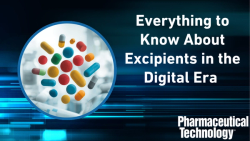
OR WAIT null SECS
- About Us
- Advertise
- Contact Us
- Editorial Info
- Editorial Advisory Board
- Do Not Sell My Personal Information
- Privacy Policy
- Terms and Conditions
© 2025 MJH Life Sciences™ , Pharmaceutical Technology - Pharma News and Development Insights. All rights reserved.
Stakeholders Comment on FDA Draft Guidance for Evaluating Biosimilarity
Biopharma majors are among the industry stakeholders who have commented and raised questions about FDA’s recently proposed draft guidance for analytical assessment of similarity in biosimilars.
On Dec. 4, 2017, a final round of comments from industry stakeholders who raised questions over FDA’s draft guidance, “Statistical Approaches to Evaluate Analytical Similarity,” about how to conduct analytical evaluation of similarity in biosimilars, was published on the website www.regulations.gov. Several biopharma majors were among the commenters, including Amgen, Boehringer Ingelheim (BI), Genentech, a Roche company, Novartis, Pfizer, Sanofi, and Shire. Other industry stakeholders include the Association for Accessible Medicines (AAM), the Biosimilars Forum, and the Biotechnology Innovation Organization (BIO).
FDA introduced the draft guidance in September 2017, which specifically describes the type of information that sponsors of proposed biosimilar products should obtain regarding the structural/physicochemical and functional attributes of the reference product. In addition, the guidance describes how that information can be used in the development of an analytical similarity assessment plan for the proposed biosimilar, as well as recommends the statistical approaches for evaluating analytical similarity. The comment period for the draft guidance closed on Nov. 21, 2017.
Biopharma majors
Pfizer’s comments include a suggestion that statistical analyses be used a supportive tool “when data are amenable to statistics and the statistical analyses results are meaningful to the understanding or interpretation of data, rather than a default expectation.” The company also noted that, while the draft guidance acknowledges that there are many challenges and limitations to applying statistical analyses to evaluate analytical similarity data and using a risk-based approach would address these challenges, it is unclear as to how a risk-based approach would actually work.
The company also pointed out that the draft guidance does not address the challenge of determining an appropriate biologically or clinically meaningful “margin for equivalence testing,” which, according to the company, is a fundamental factor in the approach outlined by the guidance.
BI, which supports the development of an analytical similarity assessment plan, strongly urged two points that it believes the FDA should take into account. One is that the agency apply scientific and regulatory consistency to all biologics, including biosimilars and interchangeable biologics, “to prevent any disparate treatment of these products.” The second is that the agency continue to recognize that a critical element for evaluating similarity is prior knowledge of all biologics-such as understanding quality attributes, understanding the molecular basis of the disease a biologic is meant to treat, and understanding the dynamics of vulnerable populations- “and that this is particularly relevant for biosimilars and interchangeable biologics, but not unique to them.”
In Genentech’s comments, the company highlighted the need to develop a protocol for both the statistical methods and experimental design to ensure rigorous assessment. “In particular, the protocol will describe the data collected prior to experimentation on the reference and biosimilar products, the data to be collected during experimentation, the statistical methods, and acceptance criteria to determine if the data collected during experimentation supports the hypothesis of similarity,” the company stated in its comments.
“One of the guidance's first sections should describe the protocol, the interactions the agency is prepared to have with the sponsor on protocol development, and the milestones in place prior to performing the assessment,” Genentech added.
Other industry stakeholders
AAM, which represents the manufacturers and distributors of finished generic pharmaceutical products,
manufacturers and distributors of bulk active pharmaceutical chemicals, and suppliers of other
goods and services to the generic pharmaceutical industry, also confirmed its support, and that of the Biosimilars Council, of the draft guidance. Among its comments, AAM noted that the draft guidance omits a significant challenge to biosimilar developers under its list of challenges, specifically that the biosimilar developer has no control over the quality attributes of the reference product.
“Numerous studies have revealed changes over time in quality attributes of multiple reference products. It is important to acknowledge this risk in this paragraph, as this can easily lead to shifts in the product mean that will impact equivalence testing,” the organization said in its comments.
In addition, the Biosimilars Council expressed concern over the statistical recommendations in Tier 1 of the guidance’s three-tier structure for assessing quality attributes of biosimilars based on levels of clinical criticality. “The requested equivalence testing for Tier 1 attributes pose the risk of restricting biosimilar approvals, if applied strictly as pass/fail criteria, for random reasons only. It may therefore have a substantial detrimental impact for development of biosimilars,” the Council noted as part of AAM’s comments.
The Biosimilars Forum added its comments to the draft guidance in which it encouraged FDA to be prepared to facilitate discussion early in the biosimilar development process to ensure minimizing misinterpretation of expectations at the onset. The forum also recommends keeping separate the concepts of physical/chemical attributes from the concepts of biological functions in the guidance to accommodate sponsors who take these two different approaches to defining a biosimilar product’s quality attributes. Some sponsors see quality attributes as outcomes based on physical/chemical properties, and some sponsors consider biological functions to be biological properties of the molecule, and thus consider them critical product quality attributes.
Source: Regulations.gov



